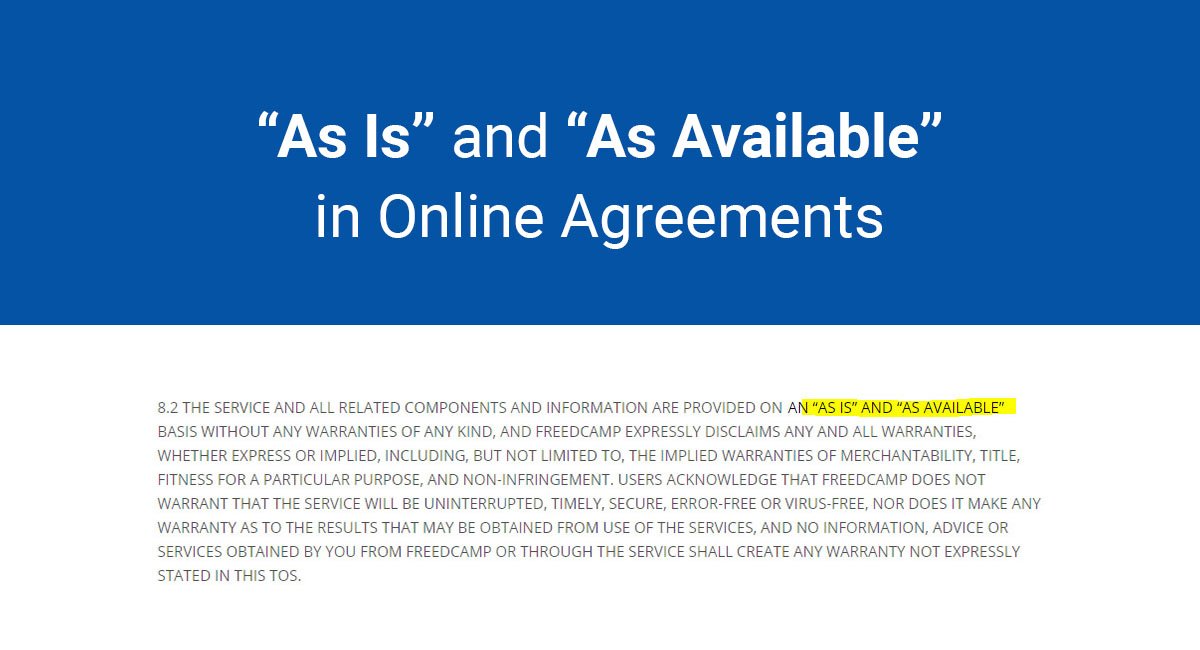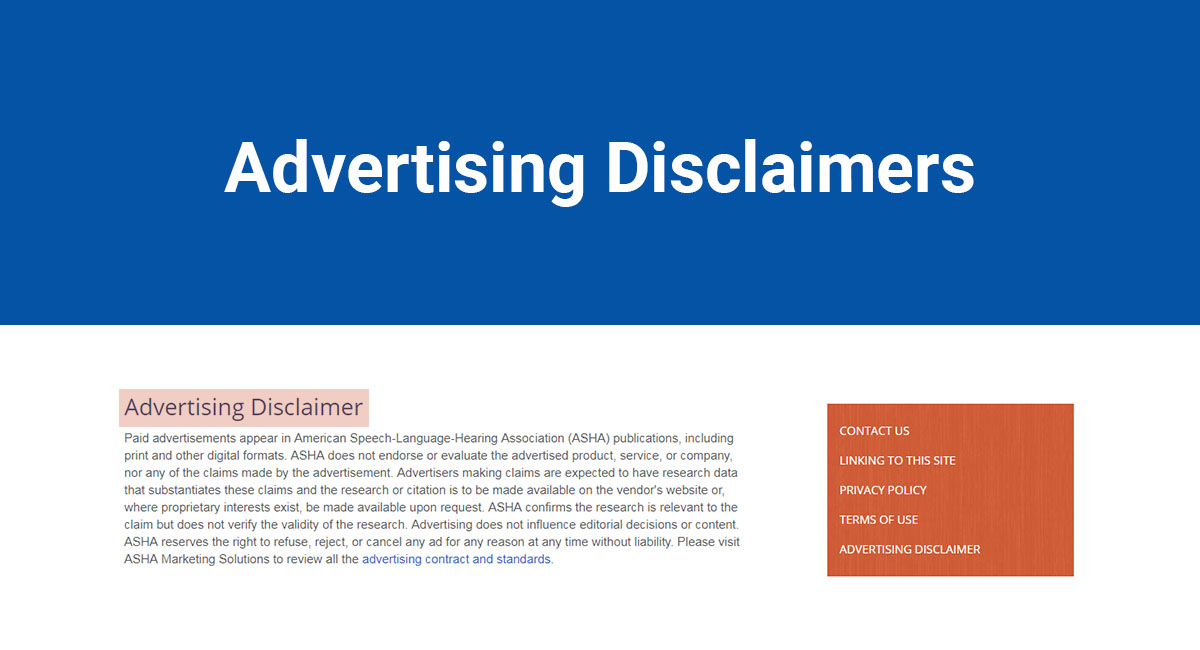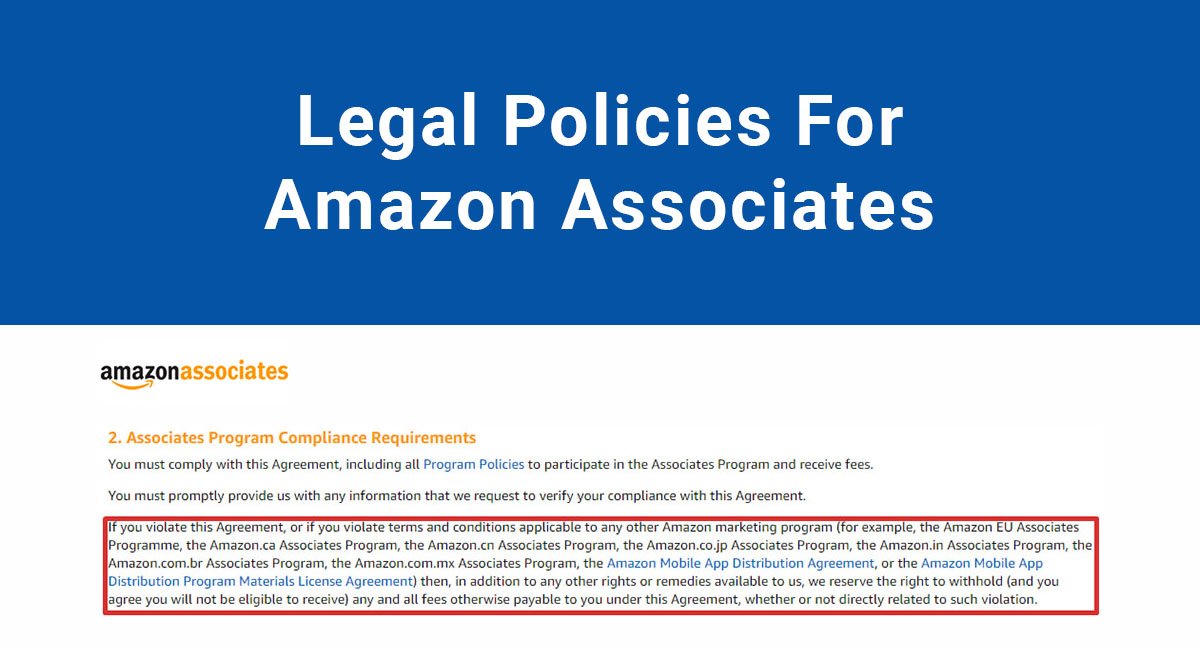"As Is" and "As Available" are contract traditions that eventually extended into the sale of digital products. While they are not required contract language, they act as clarifying statements because consumers are accustomed to them.
Not every website or app developers include these clauses, but they are helpful in emphasizing your warranty disclaimers and avoiding liability. Here is what you should know about them.
Meaning of "As Is" and "As Available"
"As Is" alerts a buyer in a sales contract that they accept the purchased item, be it real estate, animals, automobiles or appliances, in its present condition.
It also assumes the buyer has a right to inspect the property first so they can assess any defects and make an informed decision.
"As available" applies to goods and services, including those provided online. At its most simple definition, it refers to products in stock or real estate that remain on the market. Once purchased, there are no guarantees because the product is no longer available. It also refers to store or office hours with a bricks-and-mortar business.
With apps and websites, "As Available" indicates contractual standards only when the product or service is available. An app or website could be restricted from a particular geographic area so users are not guaranteed access. Also, websites and apps could be down for upgrades and maintenance, which also renders its services unavailable. During these times, "As Available" prevents a developer from facing liability.
History of use
There is no determined start point of when "As Is" or "As Available" appeared in contracts. Its equivalents existed before the Internet and software services and were most common with real estate and major purchase items, like automobiles.
Common use
Real estate contracts contain an "As Is" provision as well as a "Where Is" provision which indicates correct title. This became common practice so sellers are not held liable for unknown defects and to encourage buyers to inspect property before making an offer.
This "As Is, Where Is" provision remains in current real estate contracts and sounds similar to a warranty disclaimer:
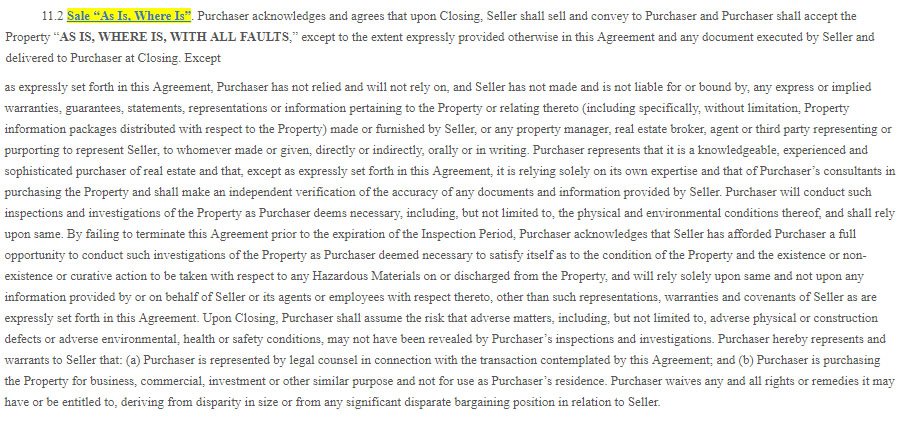
The other common use of "As Is" is in automobile purchase contracts. Dealer forms as well as the free forms available for consumer-to-consumer transactions indicate a willingness of the buyer to accept the car "As Is." This is especially important in used car purchases:

The "As Is" clause remains successful unless a seller prevents an inspection or commits fraud during the sale. Naturally, this practice extended to apps and online services.
Extension to online agreements
"As Is" and "As Available" clauses are found in Terms & Conditions and End User License Agreements, depending on which agreement the developer decides to draft. Terms & Conditions may also be called Terms of Use, Terms of Service or a User Agreement.
Apps and websites are unique in that they usually offer both a product and service. When you purchase an Adobe Creative Cloud subscription, for example, you not only receive the cloud-based services and technical support but also software to download.
That is why its Terms of Use not only mentions the software product but also services with its "As Is" clause:

"As Is" is sufficient for assuring acceptance of software and services in their present state and condition. However, you also see "As Is" and "As Available" on agreements too, especially on cloud programs.
Freedcamp, a project management platform that runs entirely from a web browser, chose to use both "As Is" and "As Available" clauses in its Terms of Service:

Arguably, "As Is" may be sufficient if you mention that it covers both your software and services. However, since there is always a likelihood of hacker attacks, downtime or malfunction, developers are frequently more secure by including "As Available" with their "As Is." You see this variety with the following examples.
Examples
Whether they are in a Terms & Conditions (T&C) or End User License Agreement (EULA), the "As Is" and "As Available" clauses are used the same way. You find them under warranty disclaimers or, occasionally, under the limitation of liability provisions.
They are almost always in all capital letters (All-Caps) too. The following examples show varieties in presentation that may help you draft your own agreements.
Note that some developers don't actually use the "As Is" language. PIXLR has a EULA that contains a very detailed disclaimer but doesn't specifically use the terms "As Is" or "As Available":

The provision still describes a situation where the user accepts the software and service "as is." But it is not as obvious and conspicuous as it would be if the "As Is" or "As Available" language was actually present. This shows how "As Is" and "As Available" act as clarifying terms, even if they are not technically legally required.
The terms are not always in All-Caps either. Automattic, for its product WordPress, prefers using highlighting instead of caps to emphasize important clauses, including "As Is":
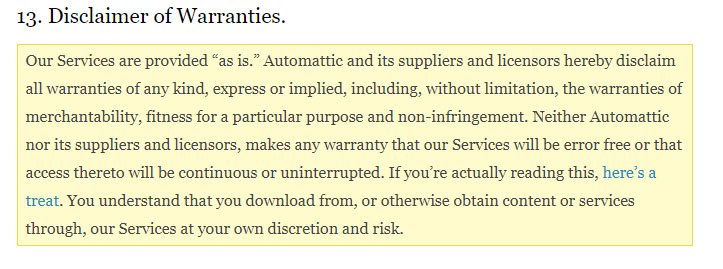
Automattic doesn't use any method of emphasis such as All-Caps, highlighting or distinctive fonts, and this is still ok.
Nest Labs creates systems and software for thermostat control, security, and smoke and carbon monoxide alarms. In its EULA, it does not contain any emphasis on its "as is" or "as available" section.

These are the exceptions and depending on your level of risk tolerance, you may decide to take a different approach or stick with the tradition. Generally, most developers use All-Caps for their "As Is" and "As Available" statements.
Google Chrome keeps "As Is" in All-Caps along with its exclusion of warranties provisions:

Rovio contains an "As Is" under its EULA warranty disclaimer. While it does not include "As Available" it also does not guarantee service will always remain uninterrupted:
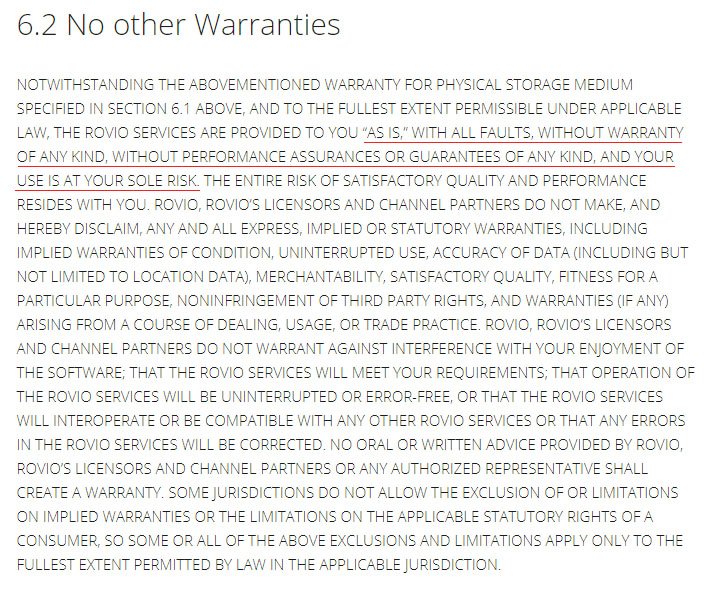
Apple sells both products and services so it is more thorough in its T&C. "As Is" and "As Available" are present in All-Caps with the rest of its warranty disclaimer:
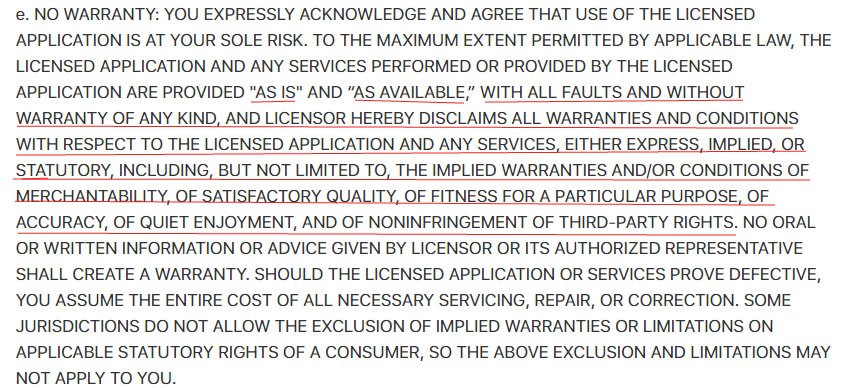
Spotify is an online music service that also offers a downloadable app. Its T&C includes "As Is" and "As Available" along with a use "at your own risk" warning:
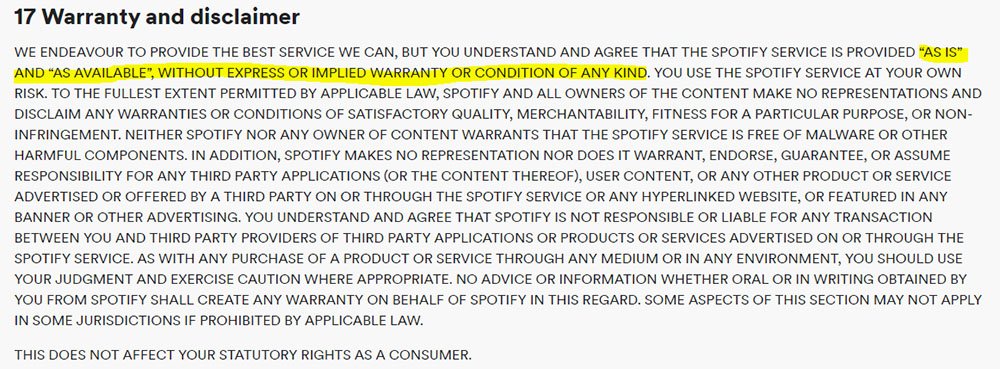
As these examples show, the use of "As Is" and "As Available" is based more on preference and a developer's desires to avoid risk. You will have to assess these for yourself when deciding how to use these provisions.
Drafting Tips
There are three factors to consider when deciding how to use "As Is" and "As Available":
- Risk Involved - If you run a service like Adobe Creative Cloud, an outage not only affects you but the bottom line of your users. Your warranty disclaimer language must be clear to assure you do not end up facing multiple lawsuits from users who could not perform their work that day. "As Is" and "As Available" together help with that. However, if you distribute a game, an outage is frustrating but not disastrous. You could likely get away with excluding "As Is" and "As Available" but some game developers, like Rovio, prefer to keep at least one of them.
- Agreement clarity - If your T&C or EULA is short and easy for users to read, you may not require the extra emphasis provided by "As Is" and "As Available" for your warranty disclaimers. This is especially true if you adopt a plain language or even FAQ-styled T&C. Lengthy agreements that are thick in legal language benefit from "As Is" and "As Available" because those are common terms consumers find familiar. That removes doubt. (The PIXLR example above would clearer if it used "As Is" or "As Available.")
- Size of user community - Perhaps the likelihood for product failure or offline time is low, but you have a large enough user base that it is not worth the risk. A popular game (like Rovio's Angry Birds franchise) or online music service having issues leads to bad public relations and possibly monetary damages against the developer. While the product or service may not be essential, a large dedicated user group is a risk in itself--as well as a benefit. Offering "As Is" or"As Available" offers protection if the unthinkable happens.
While neither clause is required for your contracts, they are time-tested and effective. You enjoy more protection from liability when including "As Is," "As Available" or both then you would have if you exclude them. The best course of action is to find a way to integrate them into your T&C or EULA.

Comprehensive compliance starts with a Privacy Policy.
Comply with the law with our agreements, policies, and consent banners. Everything is included.
